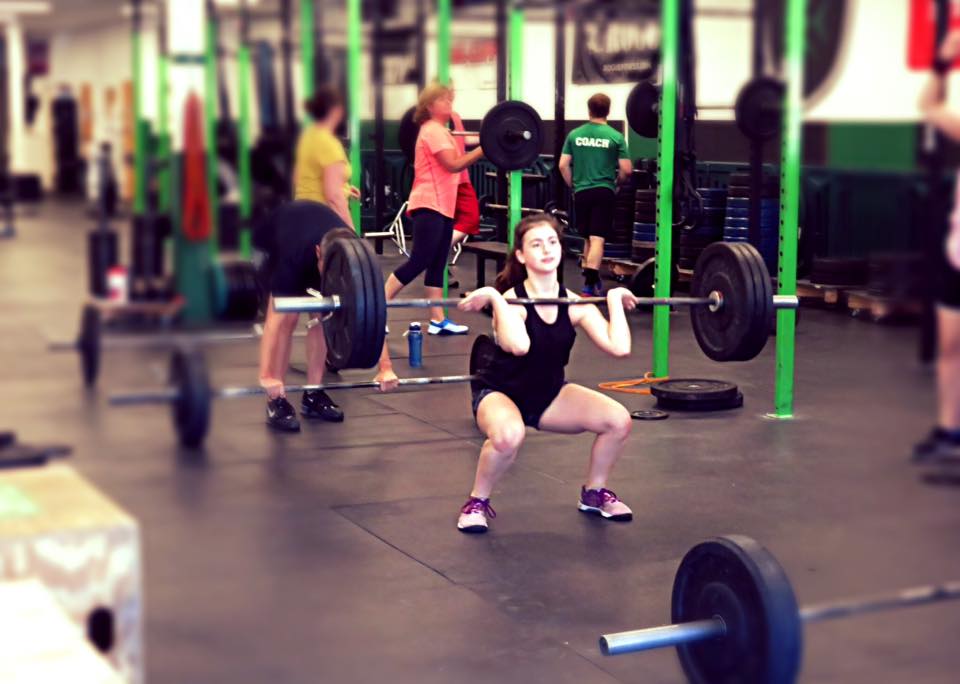From July until the end of September, CrossFit Prototype will be posting a blog per week as part of our Accessory Series. These blog posts will review 1 of the 13 CFP foundational movements (Air Squat, Back Squat, Front Squat, Deadlift, Kettlebell Swing, Pull-Up, Overhead Press, Push Press, Push Jerk, Clean, Snatch & Rowing) and provide tips on accessory exercises to help improve that area of your CrossFit game!

By Joe Black (CF-L2, USAW-L1SP)
I can’t rave enough about Olympic Weightlifting. The snatch and clean and jerk are beautiful, athletic movements and seriously fun to do, despite being extremely challenging and in constant need of practice.
The snatch and clean and jerk are the two lifts performed in the sport of Weightlifting. As you are probably well aware, they are also movements that we perform in CrossFit, either with a strength focus or as a conditioning piece.
It takes a LOT of technique practice and training to become proficient in Weightlifting. Besides spending a lot of time with the barbell, and training the full lifts themselves, there are many different movement variations and accessory exercises you can do to help improve your lifts. Probably too many to sift through and figure out so I’ll narrow it down to a few that will be beneficial to CrossFit athletes.
Before we review these, let’s get psyched up and watch two of America’s best lift some weights:
Mattie Rogers – Snatch
CJ Cummings – Clean & Jerk

Accessory Lifts for the Snatch
OHS
The overhead squat requires great ankle and hip mobility in the bottom of the squat, the ability to keep an upright torso throughout the entirety of the movement and upper back and shoulder mobility in order to hold weight overhead.
The overhead squat is tough! And you know what makes you better at overhead squatting?
Overhead squatting.
The overhead squat is the basic receiving position for the snatch. If you want to be proficient in the snatch, you need a good overhead squat.
Always include overhead squats in your snatch warm-up. 2-3 sets of 3-5 reps with an empty barbell. Hang out in the bottom. Work to feel your body open up. Embrace the suck!!
Halting Snatch Deadlift
Snatch technique is about taking the bar from the ground to overhead in an efficient path. This means close to the body and balanced throughout the lift. And starts off the ground.
A weightlifting deadlift is different than a traditional deadlift. A traditional deadlift begins with your hips higher, so you can hinge your hips and knees as you initiate the pull and drive the bar up.
A weightlifting deadlift requires you to actually “push” the weight off the ground, not “pull”. This requires more quad engagement, as you push your legs into the ground and have your hips and shoulders rise at the same time.
To drill this movement, halting snatch deadlifts are a great exercise. With this exercise, you set up like you are going to snatch the weight and stand the weight up by pushing into the ground. The goal is to maintain balance and keep your shoulders over the bar. Pause anywhere at mid- to top-thigh, hold for 2-3 seconds and slowly the weight in a controlled manner.
Work these into your snatch training, with 2-3 sets at 80% and above for 3+ reps. The goal is to move with good technique, not overload the movement.
Hip Snatch
One of the positions that we are striving to get into during the snatch and clean is the power position, which looks like this:
The hip snatch is a movement where you dip into the power position then snatch the weight. It forces you to aggressively extend (hips, knees and ankles in a straight line) then quickly pull yourself under the barbell. It teaches you the proper balance needed at the power position as well as working your speed under the bar.
This is something you can add to your warmups, stringing together 3-6 reps. It can also be trained with 70-80% of your snatch, for 1-3 sets for 2-3 reps as a technique exercise
Accessory Lifts for the Clean
Front Squat
Just like the overhead squat is the basic receiving position for the snatch, the front squat is the basic receiving position for the clean. To get better at the front squat, you should front squat more often.
A quick tip on the front squat: do your best to wrap your fingers completely around the bar. Even if you have to start with one finger, continue to work towards a full grip on the bar.
This will have tremendous carry over to your clean.
Why is that? There are 3 sections of the snatch and clean: the first pull, second pull and third pull.
The first pull is really a push into the ground. This is when the bar moves from the ground to above your knees. The second pull is when the bar moves from above your knees and into the power position before you aggressively extend your hips, knees and ankles. The third pull is when you actually pull yourself under the bar (overhead for the snatch and onto your shoulders for the clean).
The third pull of the clean will be much more stable (and you can avoid the bar crashing down onto you, making the weight feel even heavier) if you are able to use a full grip.
Halting Clean Deadlift
The clean deadlift is the same as the snatch deadlift, except you grip the bar with a clean grip (hands narrower). The same pushing movement initiates the clean, with hips and shoulders rising at the same time.
The halting clean deadlift is the same thing as the halting snatch deadlift. The goal is to maintain balance and keep your shoulders over the bar. Pause anywhere at mid- to top-thigh, hold for 2-3 seconds and slowly the weight in a controlled manner.
Work these into your clean/clean and jerk training, with 2-3 sets at 80% and above for 3+ reps. The goal is to move with good technique, not overload the movement.
Hang Cleans
Hang cleans are a great exercise to help your full clean because you can work on various parts of the lift without having to worry about taking it off the floor.
If you struggle to bring the bar into your upper thighs to hit the power position, work the hang from mid-thigh and up. If you lose positioning once you break off the floor, work the hang from a lower position (right above the floor). You can even pause in certain hang positions to strengthen that position.
Like most of the accessory lifts above, hang cleans should be trained in the 70-80% range, for 1-3 sets of 1-3 reps. If you want to work more technique, opt for lighter weight but more sets and reps. If you want to focus on strength, opt for heavier weights with lower reps.
Get Better Today!
Olympic weightlifting is one of my passions. There is a lot that you can do to improve your lifting, but that can also make things overwhelming. If you want to work one on one to improve your technique quicker and PR your lifts, get in touch through the form below or message me on Facebook! I would love to help out.
